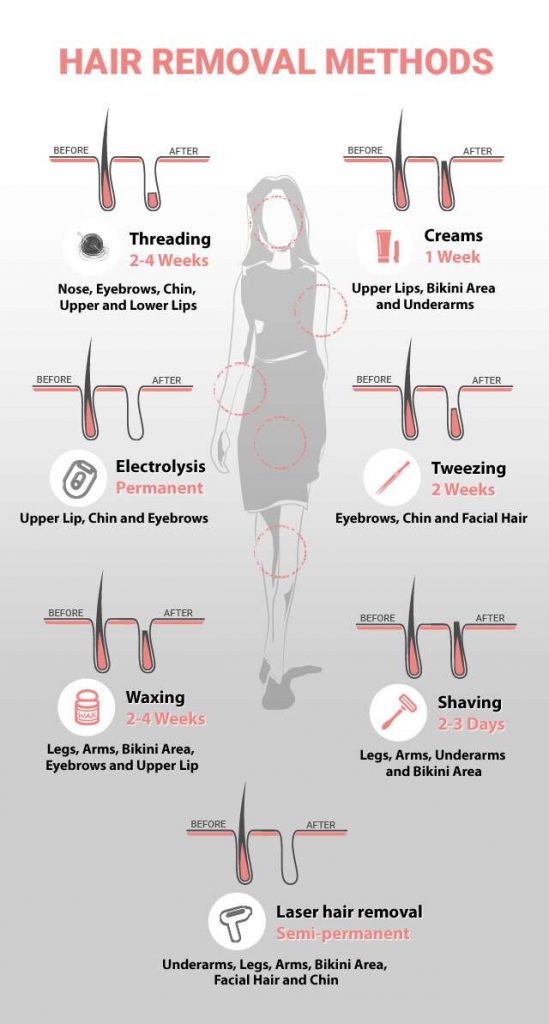Hair Removal is a process for removing unwanted hair from the body. It is also known as depilation or epilation. The process involves removing hair from the head and body area in a deliberate manner. Hair removal methods can range from waxing and epilation to electrolysis. Here is a brief look at the different methods.
Electrolysis Hair Removal
Electrolysis for hair removal is a safe, effective way to permanently eliminate unwanted body hair. The treatment has been used for more than 130 years and is regulated by the FDA. It has helped millions of people worldwide and has an excellent track record for safety and results. If you’re considering this procedure, be sure to learn more about the process.
A typical treatment lasts between fifteen and sixty minutes and can be performed on any type of skin. Depending on the area and the density of hair growth, electrolysis may take several sessions to produce noticeable results. After each session, your skin may be red, but it will eventually cool down.
Waxing Hair Removal
Waxing for hair removal has several benefits over shaving and other methods of hair removal. Waxing effectively removes a large amount of hair at one time, and the results are noticeable for up to four weeks. Waxing removes the top layer of dead skin and enables the skin to breathe and appear smoother.
Before waxing, the wax technician will clean the area and apply a pre-wax treatment. He or she will then apply a thin layer of wax to the area. Once the wax has adhered to the skin, the wax technician will use a paper strip to remove it. To prevent ingrown hairs, the area should be soothed afterward by washing it with an oil based cleanser.
After waxing, the area should be exfoliated for three to four weeks. It is important not to pick at the skin after the treatment. Some people experience temporary bumps or ingrown hairs. You can minimize the discomfort by using soothing oils or moisturizing creams before your next waxing session.
Epilation
Epilation for hair removal is a method of removing unwanted body and head hair. It is also known as depilation. It involves the deliberate removal of hair. It is the preferred choice for men and women who want a smooth, hair-free appearance. It has become popular in recent years due to its effectiveness and safety.
Before epilating, you must first prepare the skin by exfoliating the skin around the area. This will help the epilator release hair that’s stuck to the skin. After the epilation, apply a moisturizer to prevent any redness or irritation.
Sugaring
Sugaring is a great hair removal technique that is perfect for any skin type and hair texture. It uses biodegradable and 100% natural products to dissolve hair. It also removes hair in its natural direction, which helps prevent breakage and in-grown hair. Sugaring can work on hair as short as one-eighth inch and is an excellent alternative to waxing and electrolysis.
Sugaring is safe for most skin types, but pregnant women and those who are nursing should seek medical advice before using this technique. During this time, hormonal fluctuations can affect skin sensitivity, and hair removal can irritate it.
Laser hair removal
Laser hair removal is a process of removing unwanted hair by exposing the hair follicle to pulses of light. The technology was first developed over 20 years ago as an experimental treatment. It became commercially available in 1995. This treatment is a safe, painless, and effective way to remove unwanted hair.
Patients should consult with a licensed Esthetician for laser hair removal. The process is painless and does not require any anesthesia. The skin around the treatment area may be slightly red after the procedure. The patient can use ice or over-the-counter pain medication to ease the discomfort. The procedure lasts about 30 minutes.
Patients should avoid tanning or sun bathing for six weeks after the treatment. If a patient experiences skin reaction, it is important to consult with a medical practitioner. In case of a serious condition, the practitioner may refer the patient to an emergency room.
